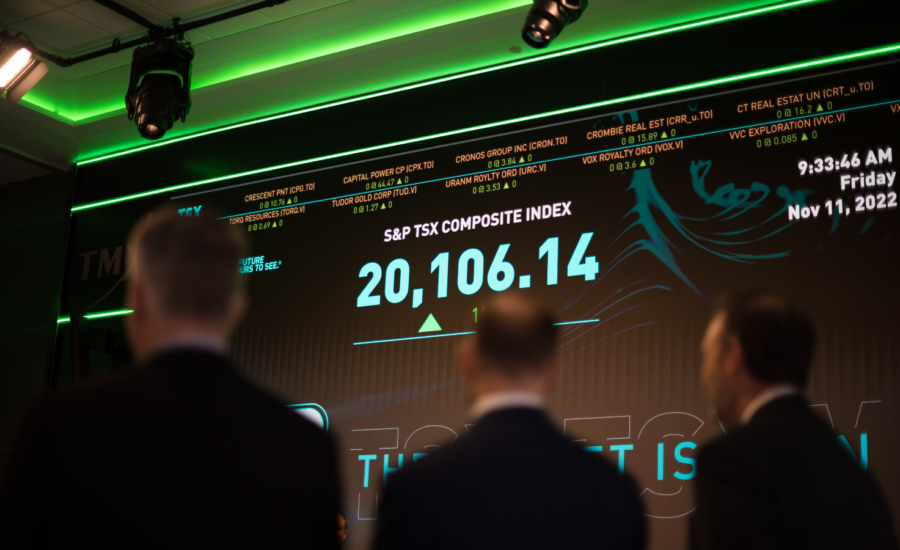Fractional trading puts pricey stocks within reach of new and younger investors
Do you only have limited cash to invest? Fractional trading makes company shares more accessible—just don’t skip the market research.
Advertisement
Do you only have limited cash to invest? Fractional trading makes company shares more accessible—just don’t skip the market research.

When a high-flying stock seems out of reach for investors with limited cash, fractional trading can help fulfill that dream of owning a piece of the company—one small portion at a time.
Fractional trading is a great way for young people to get started in investing, said Kalee Boisvert, investment adviser at Raymond James Ltd.
If a stock is trading at $300 per share, for example, the investor can buy a portion of one share and start building their position in that stock over time, Boisvert explained.
Young people in particular sometimes shy away from starting to invest because they don’t have large quantities of money set aside. Boisvert recalled being fearful of investing in the stock market in her 20s because of that very reason.
“I thought that you had to have a lot more money to start and I didn’t start until much later,” she said. Looking back, she realizes how much she missed out on in terms of compounding because she delayed her investing journey.
Fractional trading removes that mental roadblock of needing a huge sum of money to invest and makes stocks more accessible to people, Boisvert added.
“The idea is you can start investing with less money, you can buy stocks that maybe were seen as expensive,” Boisvert said.
Fractional trading has been around for a long time and is fairly common on do-it-yourself trading platforms such as Wealthsimple or Robinhood.
On Robinhood, for instance, a fraction of a share can be one-millionth of the whole share.
Last week, TD Direct Investing launched fractional trading to allow customers to buy and sell fractions of stocks and exchange-traded funds for as little as $5.
Cindy Marques, CEO of financial planning company MakeCents, said the popularity and ease of trading on DIY investing platforms have challenged big banks to open their doors to easier ways of trading.
“They have to compete,” she said of the big banks expanding to fractional trading.
Marques said trading apps have made investing straightforward in many ways for Canadians and at low cost, without having to work with an adviser or visit a bank.
TD Direct Investing isn’t the first investing platform in Canada to offer fractional shares. Wealthsimple Trade introduced fractional trades for shares of Canadian and U.S. companies in 2021, and Interactive Brokers launched fractional trading for Canadian stocks and exchange-traded funds (ETFs) in mid-2023. One differentiating feature is that TD Direct Investing offers real-time fractional trades rather than grouping them into batches throughout a trading day. Real-time trades mean that investors have “immediate access to execute trades at the current market price for both full shares and partial shares,” according to a TD Bank Group press release.
With fractional ownership comes fractional rights to dividends and voting in a company.
“You still have all the same rights,” Marques said. “It will just be in proportion to the shares.”
If an investor bought 50% of a share, the fraction of the dividend will be equivalent to that proportion, pro-rated to the ownership of that stock. Likewise, the weight of the vote is pro-rated to the fractional share, Marques explained.
When it comes to selling fractional shares, it’s similar to selling a whole share, except investors can put the exact dollar amount they’d like to get from the sale instead of the number of shares, said Boisvert.
Marques warned trading, whether whole or fractional, isn’t for everyone—especially those who can’t make time to research a company before buying.
“Although it makes (trading) easier to do so fractionally with a smaller budget, that takes a lot of research,” Marques said.
“In many cases for your average Canadians who may not have the time or the interest or the expertise in researching companies or taking this kind of a gamble on just one company, it’s still more appropriate to work with managed portfolios,” she suggested.
The basics of investing still apply to fractional investing, Boisvert said, such as keeping in mind your time horizon and risk tolerance.
For instance, if you have a goal to put a down payment on a home in the next year, the investor shouldn’t be putting that money into equities that can be volatile in the short-term, she explained.
Instead, rely on tried-and-true investment concepts like diversification, which is also easier to achieve with fractional units, she said. Fractional shares also make it more accessible to purchase stocks at various price points, especially when the purchases are spread across months.
It’s important to not put all of your eggs in one basket, and have no more than 5% of a portfolio in any one holding, Boisvert added.
“When we’re talking about buying units of shares, keep in mind to avoid FOMO (fear of missing out),” Boisvert warned.
She said young investors often gravitate toward stocks that are gaining popularity. But if a stock is soaring, chances are you’re a bit too late to the game already, Boisvert added.
She suggested a Warren Buffett–style approach to the stock market where investors put their money to work in companies they’re comfortable owning for years.
Fractional ownership could also help those hoping to get in on Buffett’s investing results, as even Berkshire Hathaway Inc.’s B shares sell for about USD$430 each. Still, that’s a bargain compared with its A shares, which run around USD$646,000 a pop.
Share this article Share on Facebook Share on Twitter Share on Linkedin Share on Reddit Share on Email
does it then cost you $9.99 to buy a $5 fractional share at TD?